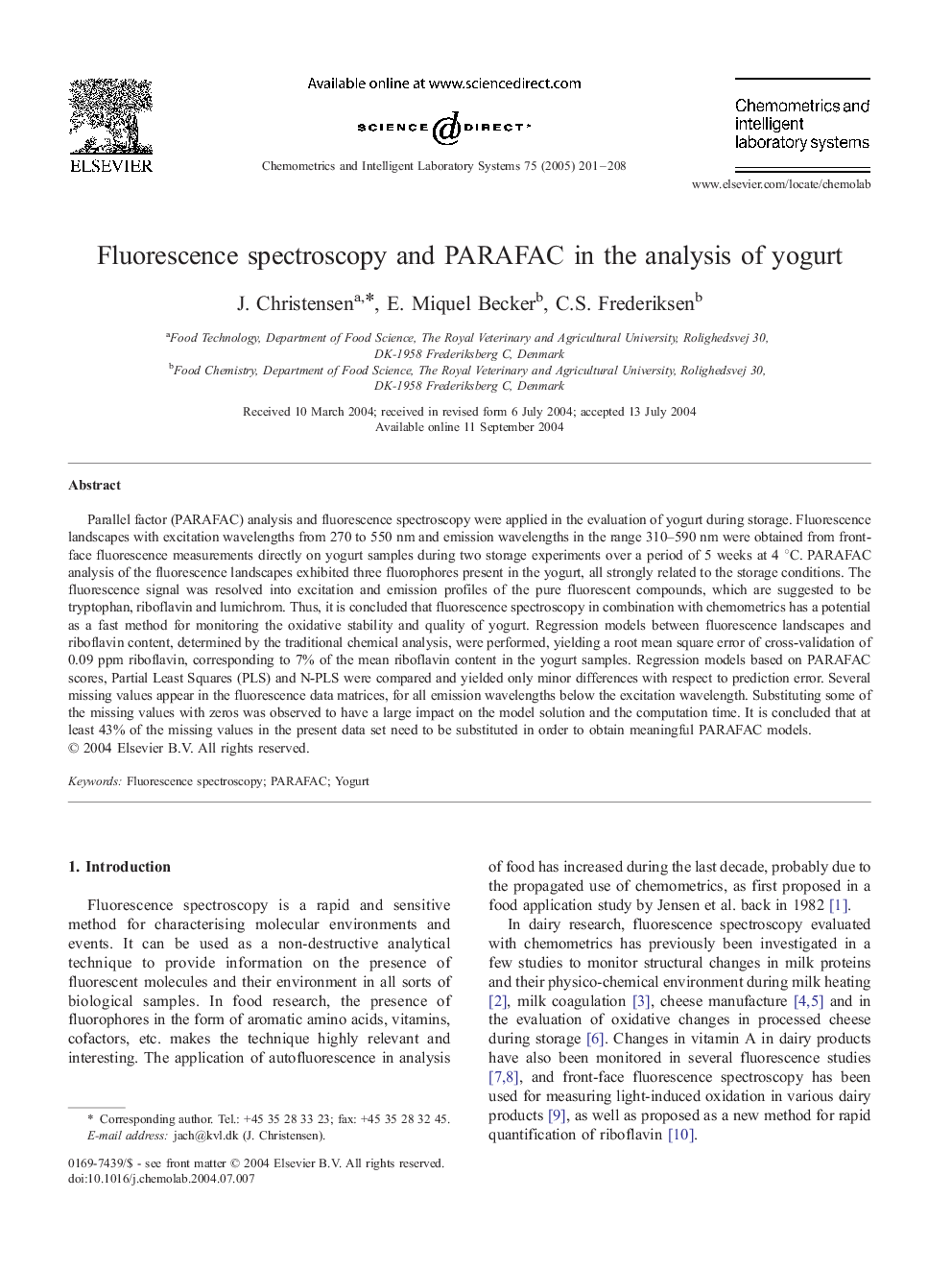| Article ID | Journal | Published Year | Pages | File Type |
|---|---|---|---|---|
| 10538198 | Chemometrics and Intelligent Laboratory Systems | 2005 | 8 Pages |
Abstract
Parallel factor (PARAFAC) analysis and fluorescence spectroscopy were applied in the evaluation of yogurt during storage. Fluorescence landscapes with excitation wavelengths from 270 to 550 nm and emission wavelengths in the range 310-590 nm were obtained from front-face fluorescence measurements directly on yogurt samples during two storage experiments over a period of 5 weeks at 4 °C. PARAFAC analysis of the fluorescence landscapes exhibited three fluorophores present in the yogurt, all strongly related to the storage conditions. The fluorescence signal was resolved into excitation and emission profiles of the pure fluorescent compounds, which are suggested to be tryptophan, riboflavin and lumichrom. Thus, it is concluded that fluorescence spectroscopy in combination with chemometrics has a potential as a fast method for monitoring the oxidative stability and quality of yogurt. Regression models between fluorescence landscapes and riboflavin content, determined by the traditional chemical analysis, were performed, yielding a root mean square error of cross-validation of 0.09 ppm riboflavin, corresponding to 7% of the mean riboflavin content in the yogurt samples. Regression models based on PARAFAC scores, Partial Least Squares (PLS) and N-PLS were compared and yielded only minor differences with respect to prediction error. Several missing values appear in the fluorescence data matrices, for all emission wavelengths below the excitation wavelength. Substituting some of the missing values with zeros was observed to have a large impact on the model solution and the computation time. It is concluded that at least 43% of the missing values in the present data set need to be substituted in order to obtain meaningful PARAFAC models.
Related Topics
Physical Sciences and Engineering
Chemistry
Analytical Chemistry
Authors
J. Christensen, E. Miquel Becker, C.S. Frederiksen,
